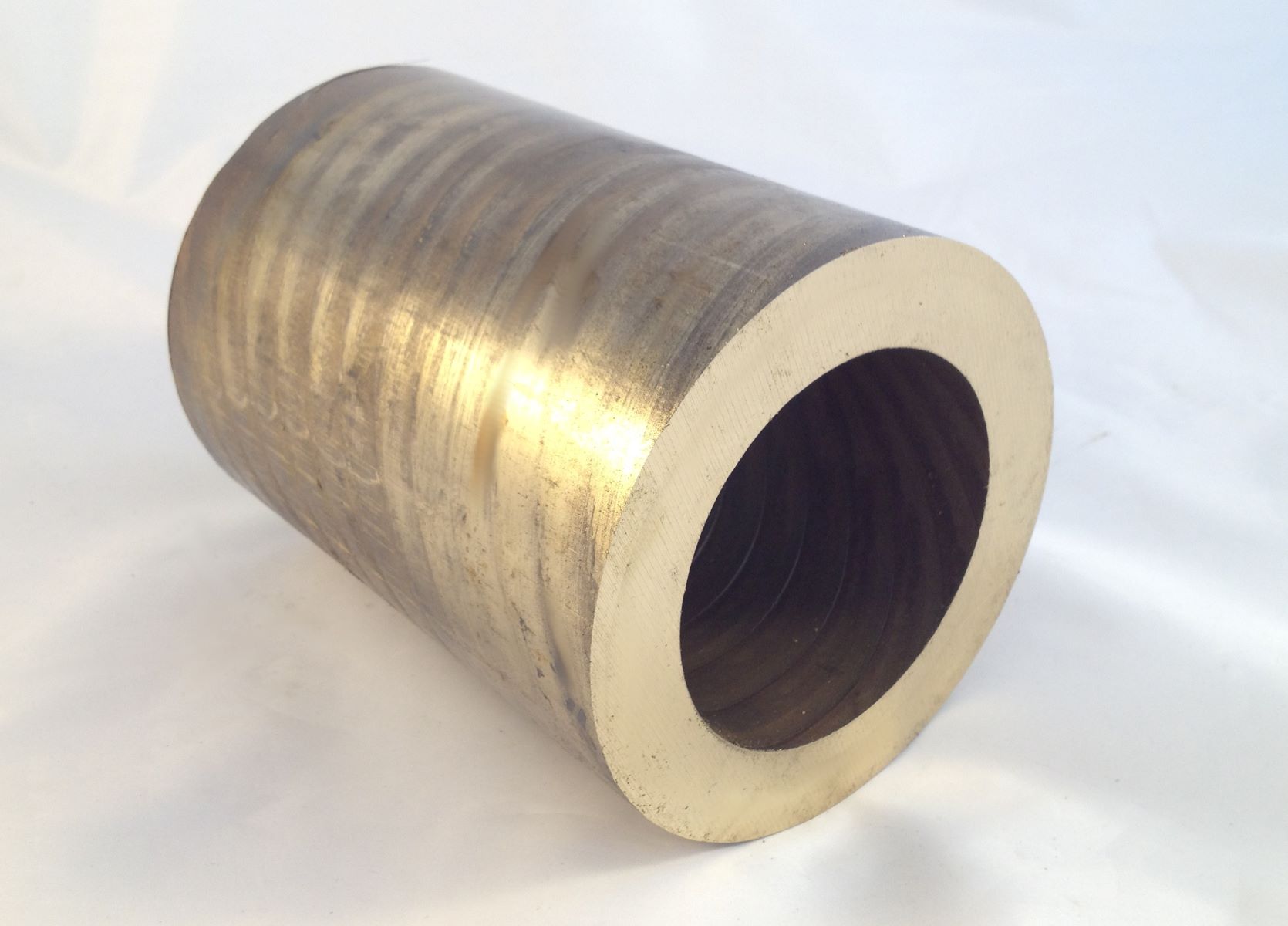
Aluminium Bronze is a fascinating alloy that combines the strength of aluminium with the corrosion resistance of bronze. But what makes it so special? Aluminium Bronze is known for its exceptional durability, making it a popular choice in marine environments, aerospace applications, and even in the creation of coins. This alloy stands out due to its high resistance to wear and tear, which means it lasts longer under harsh conditions. Additionally, Aluminium Bronze has a unique golden hue, adding an aesthetic appeal to its practical benefits. Whether you're a student, a professional, or just curious, understanding the properties and uses of Aluminium Bronze can open up a world of possibilities.
Key Takeaways:
- Aluminium bronze is a strong and corrosion-resistant alloy made of copper and aluminium, perfect for aerospace, marine, and heavy machinery applications.
- Its unique properties, including golden color, resistance to corrosion, and recyclability, make aluminium bronze a versatile and environmentally friendly material with promising future advancements.
What is Aluminium Bronze?
Aluminium bronze is a type of alloy that combines copper with aluminium. Known for its strength, corrosion resistance, and unique golden color, it has a variety of applications. Let's dive into some fascinating facts about this versatile material.
-
Aluminium bronze typically contains 5-12% aluminium, which gives it its distinctive properties.
-
The alloy is known for its excellent resistance to corrosion, especially in marine environments.
-
It has a higher strength compared to other bronze alloys, making it suitable for heavy-duty applications.
-
The golden color of aluminium bronze is due to the presence of aluminium, which gives it a unique appearance.
Historical Background
Aluminium bronze has a rich history that dates back to ancient times. Its unique properties have made it a valuable material throughout the ages.
-
The first known use of aluminium bronze dates back to the early 19th century.
-
Ancient civilizations used similar alloys for coins, tools, and weapons due to their durability.
-
The alloy gained popularity during the Industrial Revolution for its strength and corrosion resistance.
-
It was extensively used in shipbuilding and marine applications during the 19th and 20th centuries.
Industrial Applications
Aluminium bronze is widely used in various industries due to its unique properties. Here are some of its most common applications.
-
It's commonly used in the aerospace industry for landing gear components and other critical parts.
-
The marine industry uses it for propellers, pumps, and valves due to its resistance to seawater corrosion.
-
Aluminium bronze is also used in the manufacturing of bearings and bushings for heavy machinery.
-
The oil and gas industry utilizes it for components exposed to harsh environments.
Mechanical Properties
The mechanical properties of aluminium bronze make it a preferred choice for many applications. Let's explore some of these properties.
-
It has a high tensile strength, which makes it suitable for heavy-duty applications.
-
The alloy exhibits excellent wear resistance, reducing the need for frequent replacements.
-
Aluminium bronze has a low coefficient of friction, making it ideal for moving parts.
-
It maintains its strength and durability even at high temperatures.
Corrosion Resistance
One of the standout features of aluminium bronze is its exceptional corrosion resistance. This makes it ideal for use in harsh environments.
-
The alloy forms a protective oxide layer on its surface, which prevents further corrosion.
-
It is highly resistant to seawater corrosion, making it perfect for marine applications.
-
Aluminium bronze is also resistant to various chemicals, including acids and alkalis.
-
The alloy's corrosion resistance extends to both atmospheric and industrial environments.
Electrical and Thermal Conductivity
Aluminium bronze has unique electrical and thermal properties that make it suitable for specific applications.
-
It has good electrical conductivity, making it useful for electrical connectors and terminals.
-
The alloy's thermal conductivity is lower than that of pure copper but still sufficient for many applications.
-
Aluminium bronze is often used in heat exchangers and other thermal management systems.
-
Its conductivity properties make it a preferred choice for welding and brazing applications.
Manufacturing and Processing
The manufacturing and processing of aluminium bronze involve various techniques to achieve the desired properties.
-
The alloy can be cast, forged, and machined into different shapes and sizes.
-
Heat treatment processes can enhance its mechanical properties and corrosion resistance.
-
Aluminium bronze can be welded using various methods, including TIG and MIG welding.
-
The alloy is also suitable for cold working, which improves its strength and hardness.
Environmental Impact
Aluminium bronze is considered an environmentally friendly material due to its recyclability and long lifespan.
-
The alloy is 100% recyclable, reducing the need for new raw materials.
-
Its durability and corrosion resistance extend the lifespan of products made from aluminium bronze.
-
Using recycled aluminium bronze reduces energy consumption and greenhouse gas emissions.
-
The alloy's resistance to corrosion minimizes the need for protective coatings, reducing environmental impact.
Unique Characteristics
Aluminium bronze has several unique characteristics that set it apart from other alloys.
-
The alloy's golden color makes it aesthetically pleasing for decorative applications.
-
It has antimicrobial properties, making it suitable for medical and food processing equipment.
-
Aluminium bronze is non-sparking, making it safe for use in explosive environments.
-
The alloy is also resistant to biofouling, which is the accumulation of microorganisms on surfaces.
Future Trends
The future of aluminium bronze looks promising, with ongoing research and development aimed at enhancing its properties and applications.
-
Advances in alloy composition are improving its strength and corrosion resistance.
-
New manufacturing techniques are making it easier to produce complex shapes and sizes.
-
The development of high-performance aluminium bronze alloys is expanding its use in aerospace and other industries.
-
Ongoing research is exploring the use of aluminium bronze in renewable energy applications, such as wind turbines and solar panels.
The Final Word on Aluminium Bronze
Aluminium bronze stands out for its unique properties and versatile applications. Known for its strength, corrosion resistance, and durability, this alloy finds use in various industries, from marine engineering to aerospace. Its ability to withstand harsh environments makes it invaluable for shipbuilding, oil rigs, and chemical plants.
Beyond industrial uses, aluminium bronze also shines in art and architecture. Sculptors and designers appreciate its aesthetic appeal and workability. Plus, its anti-microbial properties make it suitable for medical tools and food processing equipment.
Understanding these facts about aluminium bronze helps in appreciating its importance and potential. Whether you're an engineer, artist, or just curious, knowing more about this alloy can spark new ideas and applications. Keep exploring and discovering the many ways aluminium bronze impacts our world.
Frequently Asked Questions
Was this page helpful?
Our commitment to delivering trustworthy and engaging content is at the heart of what we do. Each fact on our site is contributed by real users like you, bringing a wealth of diverse insights and information. To ensure the highest standards of accuracy and reliability, our dedicated editors meticulously review each submission. This process guarantees that the facts we share are not only fascinating but also credible. Trust in our commitment to quality and authenticity as you explore and learn with us.


